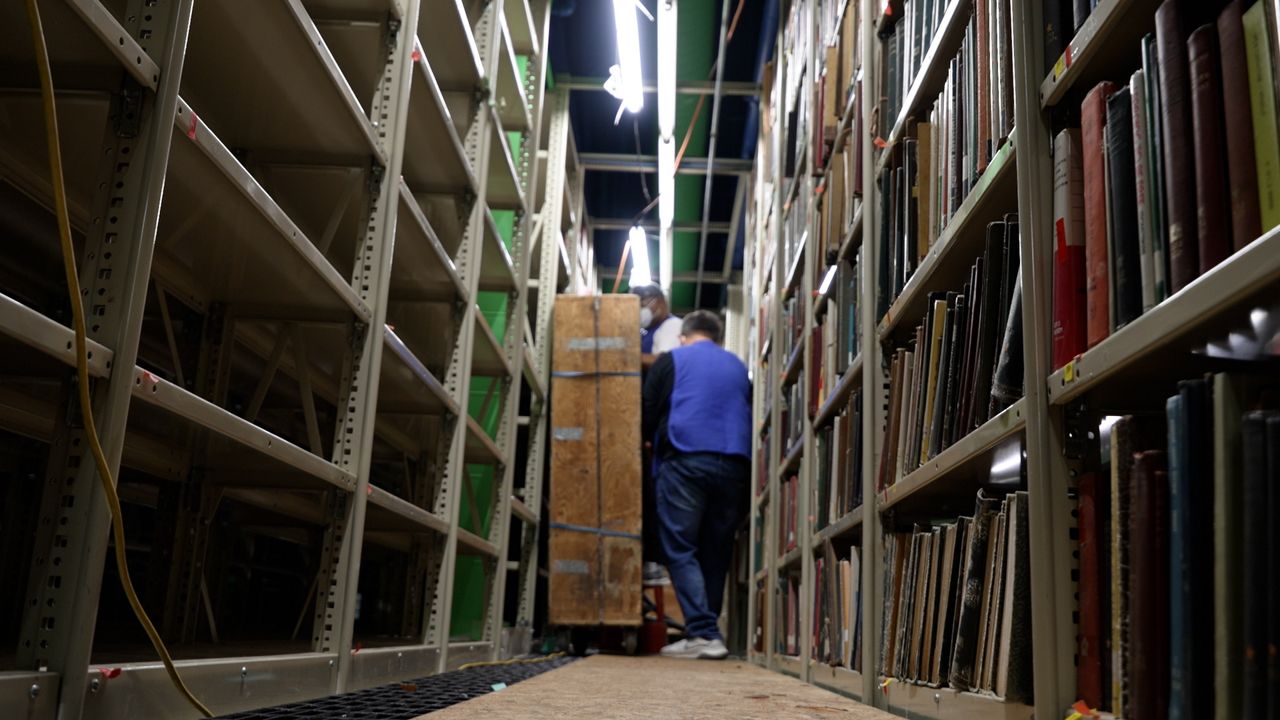CLEVELAND — Chief of Collections for the Cleveland Public Library, John Skrtic, knows the Lakeshore Facility in Collinwood extremely well.
What You Need To Know
As part of a massive project, the Cleveland Public Library is cleaning and moving roughly 650,000 books
An air conditioning malfunction at a CPL facility in 2018 left mold on 5-7% of the books kept there
The entire project takes place from Sept. 2 to Dec. 20
“It’s kind of a labyrinth of books everywhere,” Skrtic noted as he walked through the four-floor facility.
For the past 35 years, the facility has housed roughly 650,000 books of the Cleveland Public Library’s collection.
“We say about 14 miles,” Skrtic said. “Some of these books go back 100 years.”
The space is kept at a chilly 60 degrees.
Soon, all the books will be moved to a similar air-conditioned facility at the Downtown library as part of a project to move the collection to a more central location.
Air conditioning is key to maintaining the books’ condition.
“In 2018 we had an air-conditioning malfunction,” Skrtic explained.
The Lakeshore facility went without AC for a weekend, and the humidity in the facility spiked.
“Mold feeds on organic compounds, that’s what most books are,” said Kate Passannante, a paper conservator for ICA Art Conservatory. She’s providing consulting for the move, especially when it comes to some of the older and more delicate books.
Passanante said mold outbreaks in libraries aren’t uncommon.
“Mold can grow in a period of 48 hours,” Passante said. “It really eats the parts of the books as sustenance.”
Humidity is a driving factor.
“You have a risk around 60% relative humidity. When you reach 65%, that’s when it really starts to grow.”
That’s what happened in 2018 at Lakeshore when the inside reached a high 90% relative humidity, causing an estimated 5 to 7% of the books to grow mold. When the air conditioning returned, the mold stopped spreading.
“Households are really worried about toxic black mold, and that is not anything that we have here,” Passanante explained.
Since 2018, they’ve cleaned the books if they were checked out from the collection.
Taking advantage of the move, they’re now cleaning the entire collection before it is relocated downtown.
“It’s a dry cleaning process, where the surface areas of materials are cleaned using HEPA vacuums and soot sponges,” explained Matt DeCirce, Program Manager for Polygon, the contractor working with the library to clean and transport the books.
“Just a small portion of the collection was affected, but we’re taking the step of every single book being cleaned,” Skrtic said.
The cleaning of the books is a massive undertaking, but they’re moving quickly with an average of roughly 10,000 books being cleaned and transported per day.
After the books are cleaned, they are loaded onto mobile shelves and transferred to a truck for transport to a new downtown facility.
That facility is built to prevent another mold outbreak.
“Now we have remote sensors, so if anything like that happens, or there are fluctuations in temperature control, we would know immediately,” Skrtic said.
The centralized downtown location will allow the public to have quicker and easier access to the collection, which includes rare and unique books.
“It’s one of the great collections in the country,” Skrtic said.

